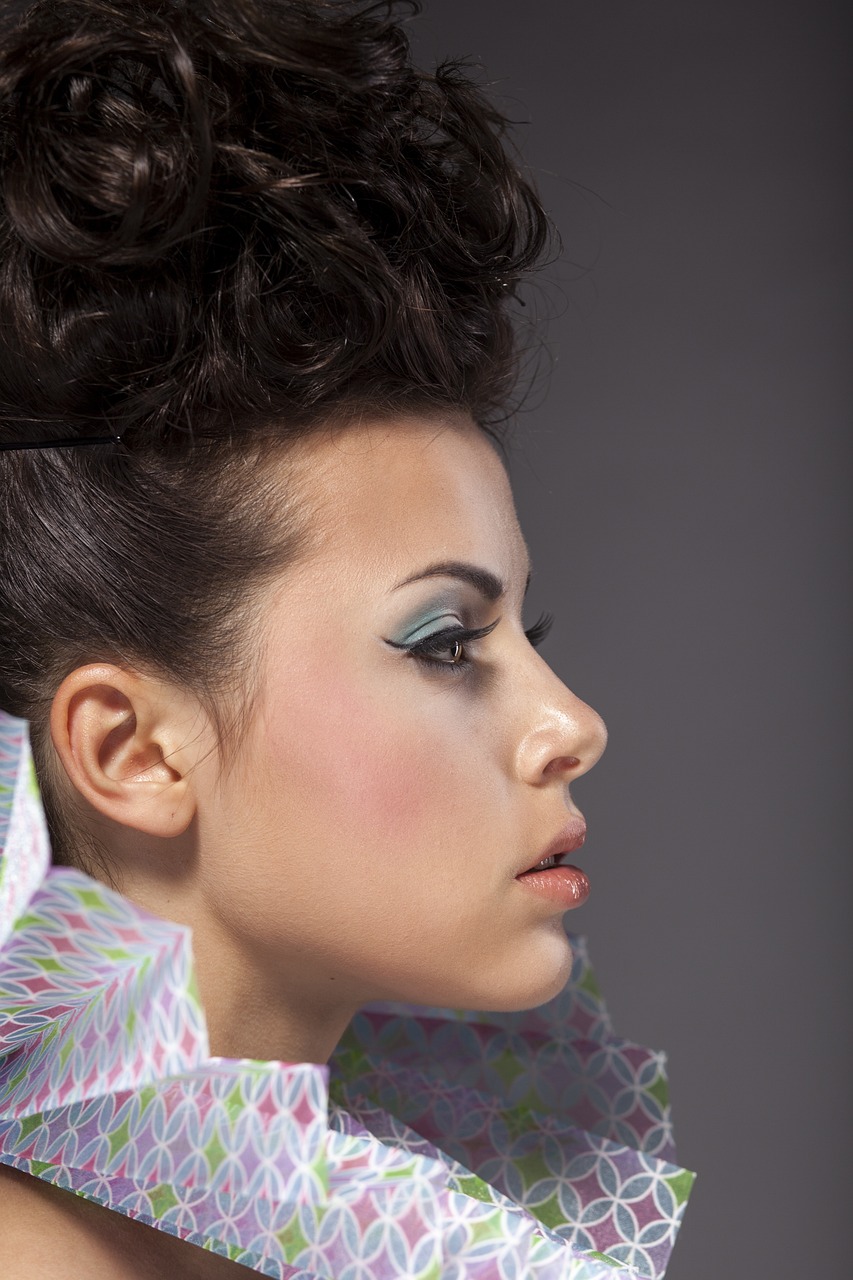Fort Walton Beach, FL
428 Mary Esther Cut Off NW Unit A,
Fort Walton Beach, FL
32548, United States
(850) 374-3595
Enhance your skin with microdermabrasion, a non-invasive procedure that exfoliates and rejuvenates your skin, leaving it smooth, refreshed, and youthful. Say goodbye to dullness and fine lines and hello to a radiant complexion. Discover more here.

Looking to enhance your skin and achieve a radiant complexion? Look no further than microdermabrasion, the revolutionary skincare treatment offered by “The Beauty Experts” in FT Walton Beach, FL. With their expertise and state-of-the-art equipment, they are the go-to estheticians for all your facial needs. Microdermabrasion is a non-invasive procedure that exfoliates and rejuvenates your skin, leaving it smooth, refreshed, and youthful. Say goodbye to dullness, uneven texture, and fine lines as microdermabrasion works wonders in revealing your skin’s natural glow. To book an appointment, simply give them a call at 850-226-7278 and get ready to experience the transformative power of microdermabrasion.
Microdermabrasion is a non-invasive cosmetic procedure that aims to improve the texture and appearance of the skin. It involves gently exfoliating the outermost layer of the skin, known as the stratum corneum, to reveal a smoother, brighter complexion. This procedure is performed using a handheld device that emits tiny crystals or has a diamond-tipped wand to remove dead skin cells and stimulate collagen production.
Microdermabrasion works by using either crystals or a diamond-tipped wand to loosen and remove the dead skin cells on the surface of the skin. The gentle exfoliation process helps to unclog pores, reduce fine lines and wrinkles, improve skin tone and texture, and promote the growth of new skin cells. Additionally, the suctioning action of the microdermabrasion device helps to stimulate blood flow and increase the production of collagen, which is essential for maintaining youthful and healthy-looking skin.
Microdermabrasion offers a range of benefits for the skin. By effectively removing dead skin cells, it can help to diminish the appearance of fine lines and wrinkles, acne scars, and hyperpigmentation. The procedure also facilitates better absorption of skincare products, allowing them to penetrate deeper into the skin and work more effectively. Microdermabrasion is suitable for all skin types and can be customized to address specific concerns, making it a versatile treatment option for individuals looking to improve the overall appearance and health of their skin.
Microdermabrasion is a suitable treatment for individuals who want to improve the quality and appearance of their skin. This procedure is particularly beneficial for those with concerns such as dull or uneven skin tone, fine lines and wrinkles, acne scars, enlarged pores, and hyperpigmentation. It is safe for all skin types and can be customized to address specific concerns, making it an effective option for both men and women of all ages. However, it is essential to consult with a professional to determine if microdermabrasion is appropriate for your individual needs and to discuss any potential contraindications.
Before undergoing a microdermabrasion treatment, it is essential to schedule a consultation with a professional esthetician. During this consultation, the esthetician will evaluate your skin’s condition, discuss your concerns and goals, and determine if microdermabrasion is the appropriate treatment option for you. They will also provide you with information about the procedure, the expected results, and any potential risks or side effects.
During the consultation, the esthetician will perform a thorough assessment and analysis of your skin. This includes evaluating your skin type, identifying any specific concerns or conditions, and determining the appropriate settings and techniques for the microdermabrasion treatment. By understanding your skin’s unique needs, the esthetician can tailor the treatment to ensure optimal results and minimize the risk of adverse reactions.
Another important aspect of the consultation is discussing your expectations and concerns regarding the microdermabrasion treatment. It is crucial to communicate openly and honestly with your esthetician to ensure that your goals align with what can be realistically achieved through microdermabrasion. The esthetician will address any concerns or questions you may have, providing you with a clear understanding of what to expect before, during, and after the treatment.
To prepare for a microdermabrasion treatment, your esthetician will provide you with specific instructions to follow. This may include avoiding sun exposure, waxing, or using certain skincare products in the days leading up to the treatment. It is crucial to follow these instructions closely to ensure optimal results and minimize the risk of complications. Your esthetician will also advise you on any necessary post-treatment care and precautions to take.

This image is property of pixabay.com.
Before the microdermabrasion treatment begins, your esthetician will cleanse your skin thoroughly to remove any dirt, oil, or makeup. This step is essential to ensure that the microdermabrasion device can effectively exfoliate the skin and achieve the desired results. Cleansing also helps to minimize the risk of infection or irritation during the treatment.
Once your skin is clean and prepared, your esthetician will begin the microdermabrasion treatment by applying the handheld device to your skin. The device may either emit tiny crystals or have a diamond-tipped wand, depending on the chosen method. The esthetician will glide the device across your skin, targeting specific areas or treating the entire face, neck, or other areas of concern.
During the treatment, your esthetician will adjust the settings of the microdermabrasion device based on your skin type and condition. This ensures that the treatment is tailored to your specific needs, promoting optimal results and minimizing the risk of adverse reactions. The esthetician’s expertise and experience play a crucial role in determining the appropriate settings and techniques for your individual skin requirements.
The microdermabrasion device exfoliates the skin in a gentle, controlled manner. The handheld device glides over the skin, delivering controlled abrasion that removes the outermost layer of dead skin cells. This exfoliation process helps to reveal smoother, brighter skin, while also promoting the production of collagen and elastin, which are essential for maintaining the skin’s firmness and elasticity.
As the microdermabrasion device exfoliates the skin, it simultaneously suctions away the dead skin cells and any debris that may have accumulated on the skin’s surface. This suctioning action helps to further cleanse and detoxify the skin, unclog pores, and stimulate blood circulation. It may also enhance lymphatic drainage, reducing puffiness and promoting a more youthful and radiant complexion.
During the microdermabrasion treatment, you may experience a mild scratching or vibrating sensation as the device exfoliates the skin. However, the procedure is generally well-tolerated and should not cause significant discomfort. If you have sensitive skin or are concerned about discomfort, you can discuss this with your esthetician, who can adjust the treatment settings accordingly to ensure your comfort.
The duration of a microdermabrasion treatment session can vary depending on the areas being treated and the specific concerns addressed. On average, a session typically lasts between 30 minutes to one hour. However, this timeframe may vary based on individual needs and the esthetician’s treatment plan. Your esthetician will provide you with a more accurate estimate during the consultation.
After a microdermabrasion treatment, it is essential to follow the post-treatment care instructions provided by your esthetician. These instructions may include avoiding excessive sun exposure, using gentle cleansers and moisturizers, and applying sunscreen regularly to protect your skin. It is also advisable to avoid harsh skincare products, exfoliants, and treatments for a few days to allow your skin to recover fully.
While microdermabrasion is generally a safe and well-tolerated procedure, some individuals may experience temporary side effects. These can include mild redness, sensitivity, dryness, or flaking of the skin. Your esthetician will guide you on how to manage these potential side effects, which may involve using soothing skincare products, avoiding harsh chemicals, and staying hydrated to support the skin’s healing process.
Following a microdermabrasion treatment, it is crucial to protect the treated skin from excessive sun exposure. The newly exposed skin may be more susceptible to sun damage, which can cause pigmentation issues and delay the healing process. Applying a broad-spectrum sunscreen with an SPF of 30 or higher is essential to shield your skin from harmful UV rays and prevent unwanted complications.
To maintain the results of your microdermabrasion treatment, it is important to establish a consistent skincare routine. This should include cleansing your skin twice a day, using gentle exfoliants, moisturizing regularly, and applying SPF during the day. Your esthetician can recommend specific skincare products suitable for your skin type and concerns, helping you establish an effective and personalized routine.
The frequency of microdermabrasion sessions varies depending on individual needs and goals. In general, a series of treatments is recommended to achieve the desired results. This often involves scheduling sessions every two to four weeks initially, followed by maintenance treatments every one to three months. Your esthetician will create a customized treatment plan based on your skin’s condition and your desired outcome.
The results of microdermabrasion are typically noticeable after the first treatment. However, optimal results are achieved through a series of sessions. Over time, you can expect to see improvements in skin texture, reduction in fine lines and wrinkles, lightening of hyperpigmentation, and a more even and radiant complexion. The timeline for achieving these results can vary depending on individual factors, but significant improvements are often seen after three to six sessions.

This image is property of pixabay.com.
Combining microdermabrasion with other cosmetic treatments can enhance the overall results and address multiple skin concerns simultaneously. By integrating complementary treatments, you can maximize the effectiveness of each procedure and optimize the outcome. This approach allows for a more comprehensive and customized approach to skincare, targeting specific concerns and achieving more dramatic and long-lasting results.
Chemical peels and microdermabrasion work synergistically to improve the skin’s texture, tone, and overall appearance. Chemical peels involve applying a solution to the skin to remove damaged outer layers and stimulate collagen production. When used in conjunction with microdermabrasion, chemical peels can penetrate deeper into the skin, resulting in more significant improvements and enhanced exfoliation.
Facials and microdermabrasion treatments can be combined to provide a thorough and rejuvenating experience for the skin. facials typically involve deep cleansing, steam, extraction of impurities, and the application of specialized serums or masks. When followed by microdermabrasion, facials can effectively unclog pores, remove dead skin cells, and improve the absorption of active ingredients, leaving the skin refreshed, nourished, and glowing.
Microneedling, also known as collagen induction therapy, involves creating micro-injuries in the skin to stimulate collagen production and enhance skin rejuvenation. When combined with microdermabrasion, microneedling can benefit from the improved penetration of active ingredients and a smoother skin surface. This combination can address concerns such as acne scars, uneven skin texture, and signs of aging more effectively.
Laser treatments and microdermabrasion can complement each other by targeting different layers of the skin. Laser treatments utilize focused light energy to address specific concerns such as pigmentation, vascular lesions, or unwanted hair. When combined with microdermabrasion, the skin’s outer layer is exfoliated, allowing the laser to penetrate more effectively and achieve better results.
While microdermabrasion is generally safe for most individuals, certain skin conditions may necessitate avoiding this treatment. These conditions can include active acne, rosacea, eczema, psoriasis, dermatitis, or any open or infected wounds on the treatment area. It is crucial to consult with a professional to determine if microdermabrasion is suitable for your specific skin condition.
Pregnant and breastfeeding individuals are generally advised to avoid microdermabrasion. Although the risks associated with the procedure are minimal, it is recommended to err on the side of caution during these sensitive periods. Hormonal changes and increased skin sensitivity during pregnancy and breastfeeding may affect the skin’s response to the treatment and potentially lead to adverse reactions.
Microdermabrasion should not be performed on areas with open wounds, cuts, or active infections. These conditions can increase the risk of infection and delay the healing process. It is essential to inform your esthetician of any existing cuts, sores, or infections before the treatment to ensure your safety and well-being.
If you have recently undergone a chemical peel or laser treatment, it is advisable to wait until your skin has fully healed before scheduling a microdermabrasion session. These treatments can leave the skin more tender, sensitive, and susceptible to adverse reactions. Waiting until the skin has fully recovered ensures optimal results and minimizes the risk of complications.
Some medications, such as isotretinoin (Accutane), may increase the skin’s sensitivity and compromise its integrity. It is important to disclose any medications you are currently taking to your esthetician before undergoing a microdermabrasion treatment. They can assess the potential risks and determine if it is safe and appropriate for you to proceed with the procedure.

This image is property of pixabay.com.
Choosing a qualified and experienced esthetician is essential to ensure a safe and effective microdermabrasion treatment. A professional esthetician will have the necessary knowledge and skills to analyze your skin, recommend suitable treatments, and perform the procedure with precision and care. They will prioritize your safety and well-being, providing you with a comfortable and positive experience.
Before choosing an esthetician for your microdermabrasion treatment, it is advisable to conduct thorough research and read reviews from previous clients. Look for estheticians who are highly recommended, have a strong reputation for their expertise, and are known for providing exceptional results. Online platforms, such as review websites and social media, can be valuable resources to gather feedback and insights from other individuals who have undergone treatments with the esthetician.
During the initial consultation, it is important to ask specific questions to assess the esthetician’s knowledge, experience, and qualifications. Some questions to consider include inquiring about their training and certifications, their experience with microdermabrasion, their track record of achieving desired results, and their understanding of your individual skin concerns. Their responses will help you gauge their expertise and determine if they are the right fit for your treatment.
When choosing an esthetician, it is important to look for appropriate credentials and certifications. Estheticians should have completed formal training from reputable institutions and hold valid licenses to practice. Additionally, certifications from recognized professional organizations, such as the National Coalition of Estheticians, Manufacturers/Distributors & Associations (NCEA), can provide further assurance of their expertise and commitment to upholding high standards of practice.
The cost of microdermabrasion can vary based on several factors. These may include the geographic location of the esthetician, their level of experience and expertise, the facility or spa where the treatment is performed, the equipment and products used, and the specific needs of the individual. It is important to consider these factors when evaluating the cost and to prioritize the quality and safety of the treatment over its affordability.
On average, the cost of a single microdermabrasion treatment can range from $75 to $200. However, this price may vary depending on the factors mentioned earlier. Some estheticians may also offer package deals or discounted pricing for multiple sessions. It is recommended to discuss the cost with your esthetician during the consultation to gain a clear understanding of the expenses involved and explore any available options.
When considering microdermabrasion treatments, it is beneficial to compare prices and packages offered by different estheticians. However, it is important to remember that the cheapest option may not always provide the best quality or results. Take into account the esthetician’s qualifications, reputation, and the overall value of the treatment when evaluating the cost. Investing in a skilled and experienced esthetician can ensure a safe and satisfactory experience.
Microdermabrasion is typically considered a cosmetic procedure and may not be covered by insurance. However, certain insurance plans or medical savings accounts may offer coverage or reimbursement for specific skin conditions or medical indications. It is advisable to check with your insurance provider to determine if any coverage or reimbursement is available. Additionally, many estheticians offer flexible payment options, including payment plans or financing, to make the treatment more affordable and accessible.
When considering the cost of microdermabrasion, it is important to prioritize value over price. While finding an affordable treatment is essential, it should not come at the expense of quality, expertise, or safety. A skilled and reputable esthetician may charge more for their services, but their expertise and the results they can achieve may justify the higher cost. Prioritize finding an esthetician who can deliver the best value and ensure a positive overall experience.
Microdermabrasion is considered a safe procedure with minimal risks. However, some individuals may experience common side effects, which are usually temporary and subside within a few days. These can include mild redness, sensitivity, dryness, or flaking of the skin. It is important to follow the aftercare instructions provided by your esthetician to manage these side effects effectively.
While rare, there is a small risk of more serious complications associated with microdermabrasion. This can include infection, scarring, hyperpigmentation, or other skin discolorations. The chances of these risks can be minimized by choosing a qualified esthetician and following their pre- and post-treatment instructions diligently. Communicating openly with your esthetician about any concerns or questions you may have can also help mitigate potential risks.
To minimize potential risks associated with microdermabrasion, it is crucial to choose a qualified and experienced esthetician who adheres to strict safety protocols. Following their instructions for pre- and post-treatment care is also essential for optimal results and minimizing the risk of complications. Additionally, individuals with certain skin conditions or contraindications should avoid microdermabrasion altogether to prevent any adverse reactions.
While complications from microdermabrasion are rare, it is important to be aware of warning signs that may require medical attention. If you experience severe or persistent pain, excessive bleeding, swelling, infection, or any unexpected changes in your skin, it is advisable to consult a healthcare professional. Prompt medical attention can help address any potential complications promptly and ensure proper care and management.
DIY microdermabrasion kits and devices are available for at-home use, offering convenience and cost savings compared to professional treatments. The benefits of DIY include privacy, affordability, and the ability to perform treatments at your own convenience. However, there are some drawbacks to consider. DIY kits may have lower effectiveness compared to professional devices, and there is a higher risk of user error or improper technique. Additionally, DIY treatments may not provide the same level of analysis, customization, or safety as professional treatments.
One of the main safety concerns with DIY microdermabrasion is the potential for over-exfoliation or incorrect technique, leading to skin damage or irritation. Without proper training and knowledge, it can be challenging to select the appropriate settings, adjust suction levels, and tailor the treatment to individual skin types and concerns. This increases the risk of adverse reactions, especially for those with sensitive skin or specific skin conditions.
Professional microdermabrasion treatments offer several advantages over DIY options. Estheticians are trained to assess the skin, select appropriate settings, and tailor the treatment to each individual’s needs. They have access to professional-grade devices and can perform the procedure with precision and expertise. Professional treatments also typically include a comprehensive analysis of the skin, post-treatment care, and personalized recommendations, ensuring optimal results and minimizing the risk of complications.
While DIY microdermabrasion may provide initial improvements in skin texture, the long-term impacts may be limited compared to professional treatments. Improper technique or inadequate equipment may result in minimal exfoliation or incomplete removal of dead skin cells. This can lead to suboptimal results, with the skin possibly reverting to its previous condition. Long-term maintenance and achieving more significant improvements are often better served through professional treatments, where expertise and individualized care can contribute to sustained results.
In conclusion, microdermabrasion is a popular cosmetic treatment that offers numerous benefits for improving the health and appearance of the skin. By effectively exfoliating the surface layer of the skin, microdermabrasion can minimize fine lines, reduce the appearance of scars and pigmentation, and promote a smoother, more radiant complexion. The treatment is suitable for various skin types and can be customized to address specific concerns. However, it is important to consult with a qualified esthetician to determine if microdermabrasion is appropriate for your individual needs and to discuss any potential contraindications. By following proper preparation, receiving the treatment from a qualified professional, and adhering to recommended aftercare, you can enjoy the benefits of microdermabrasion and enhance the health and beauty of your skin. Remember to research and choose a qualified esthetician, prioritize value over price, and be mindful of potential risks and side effects.